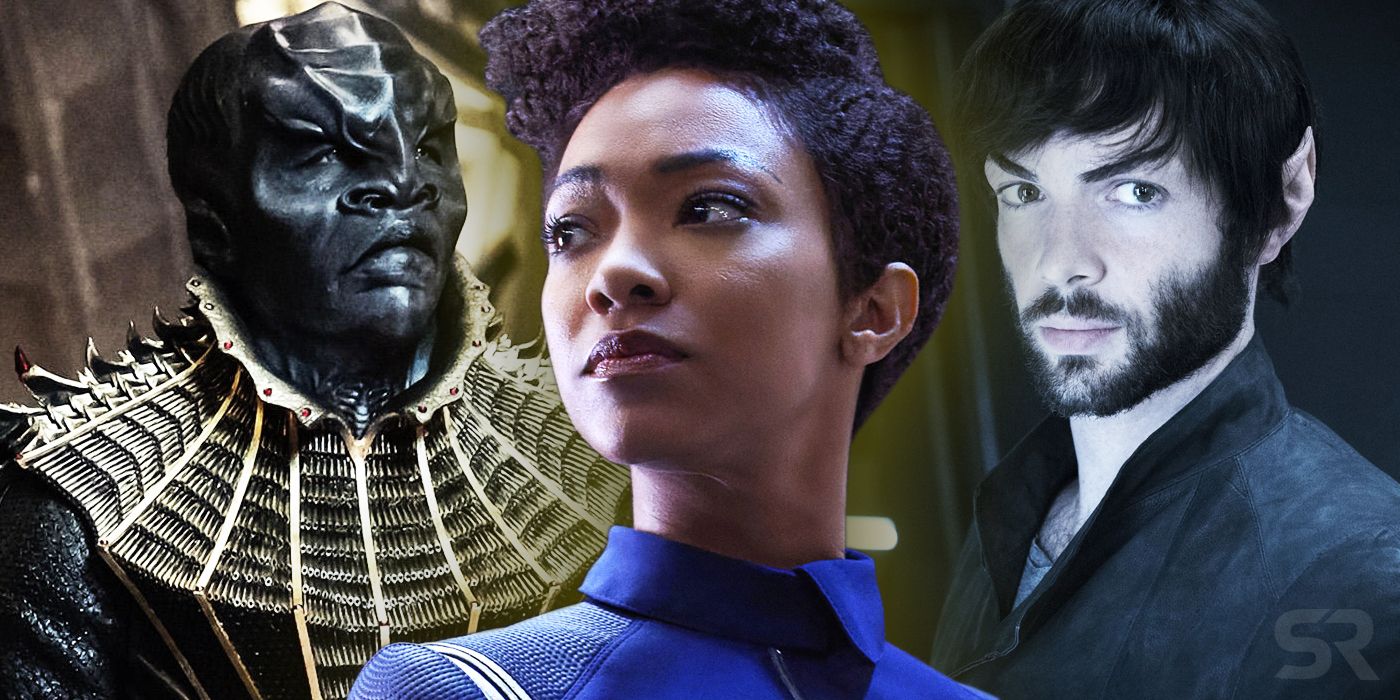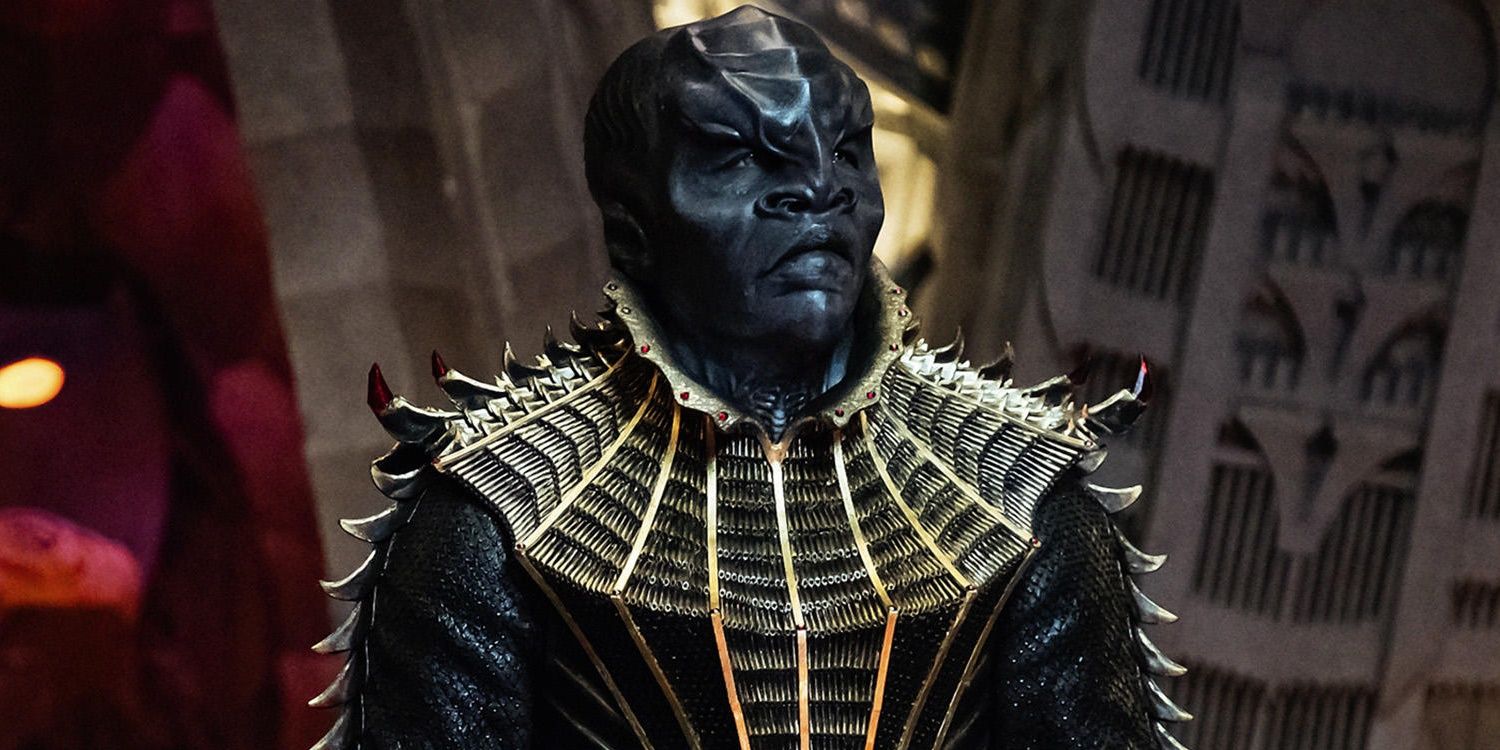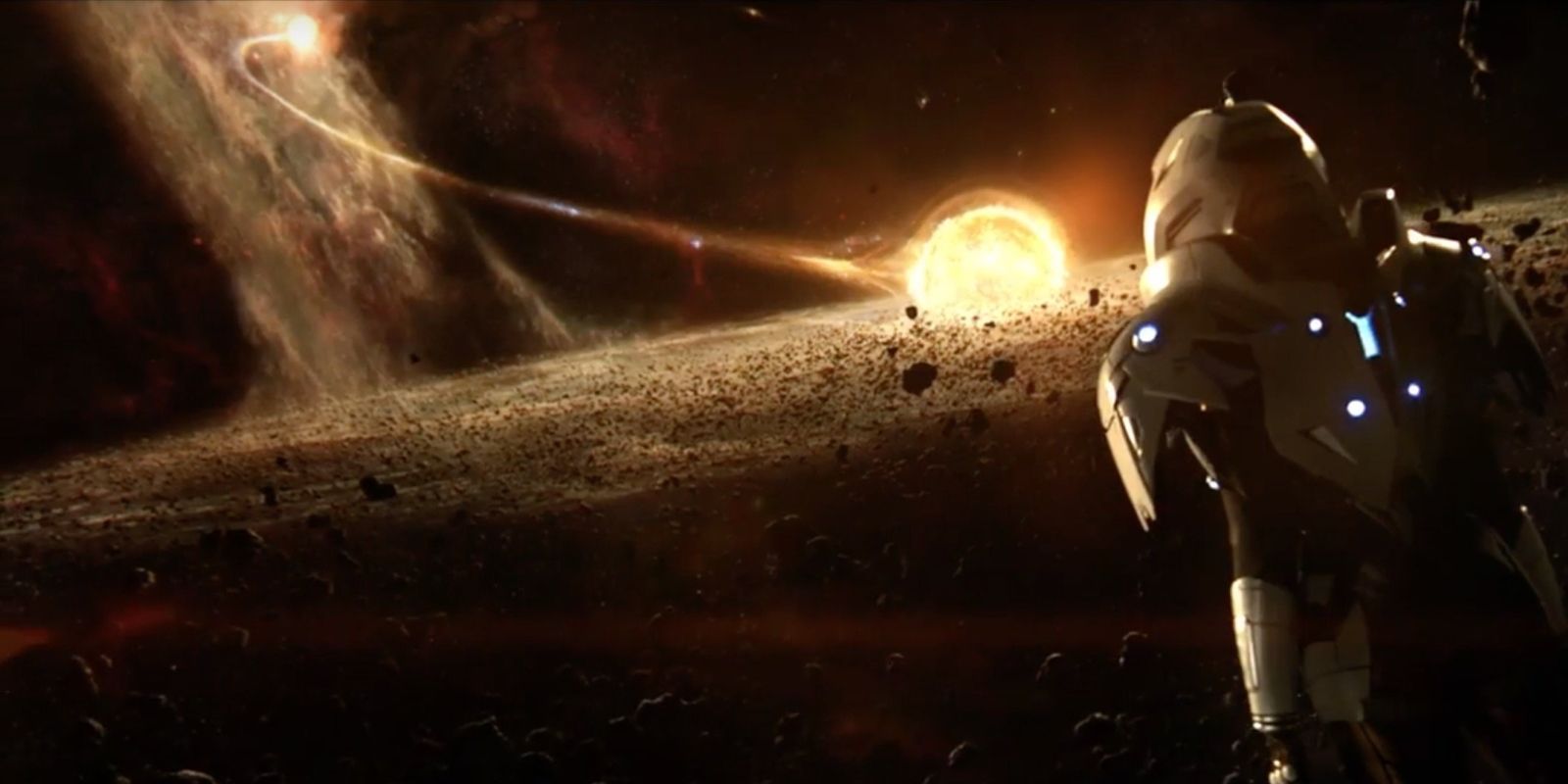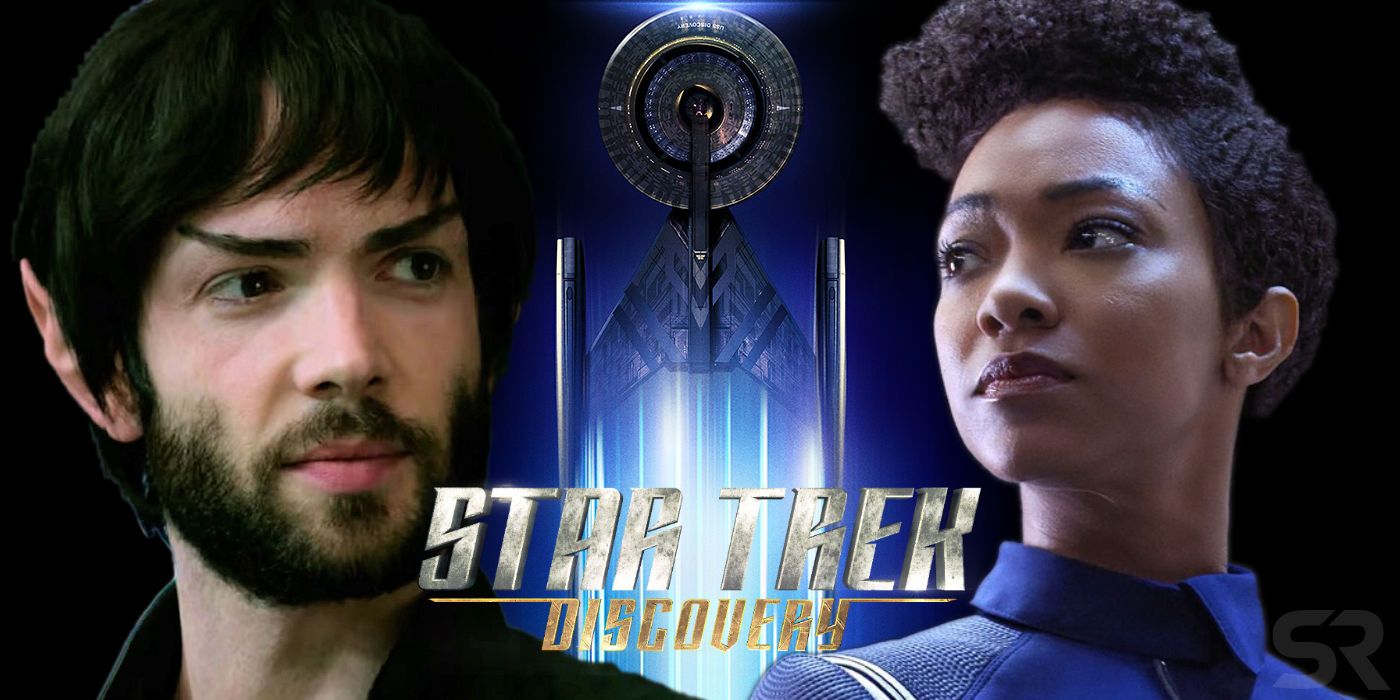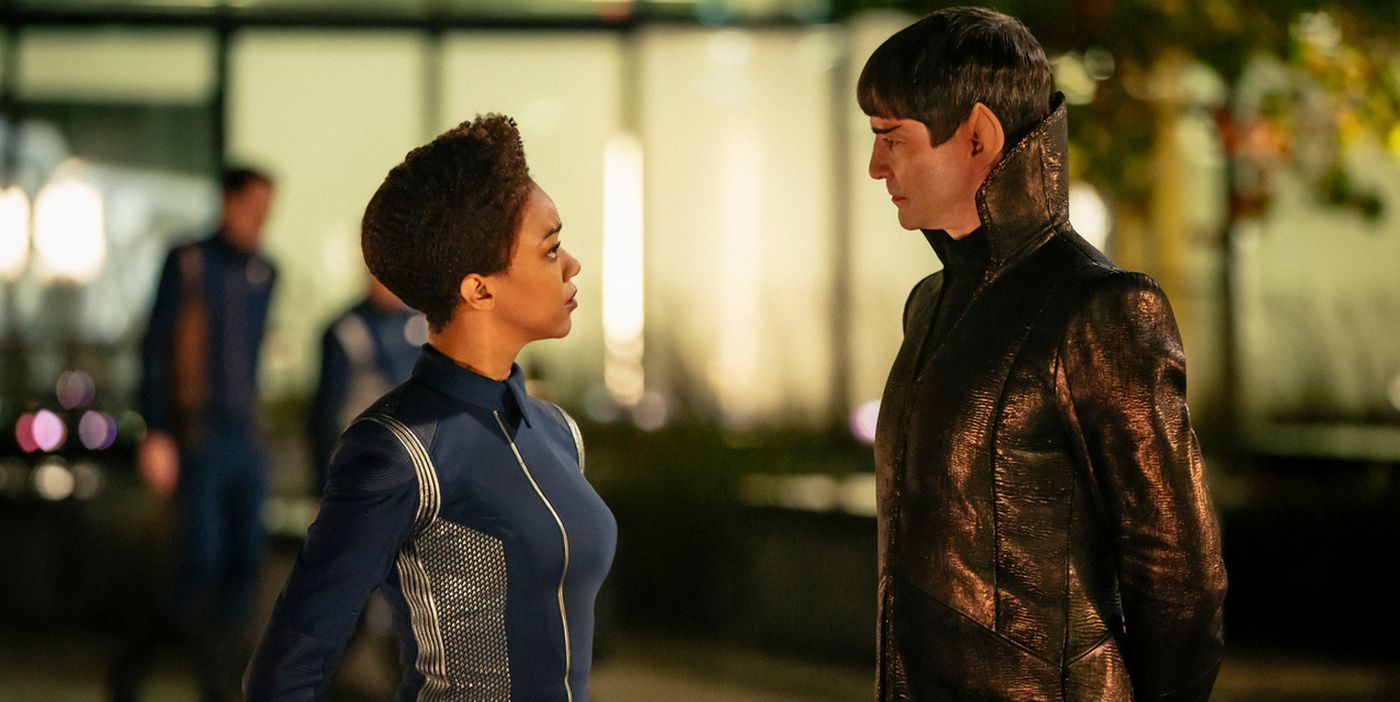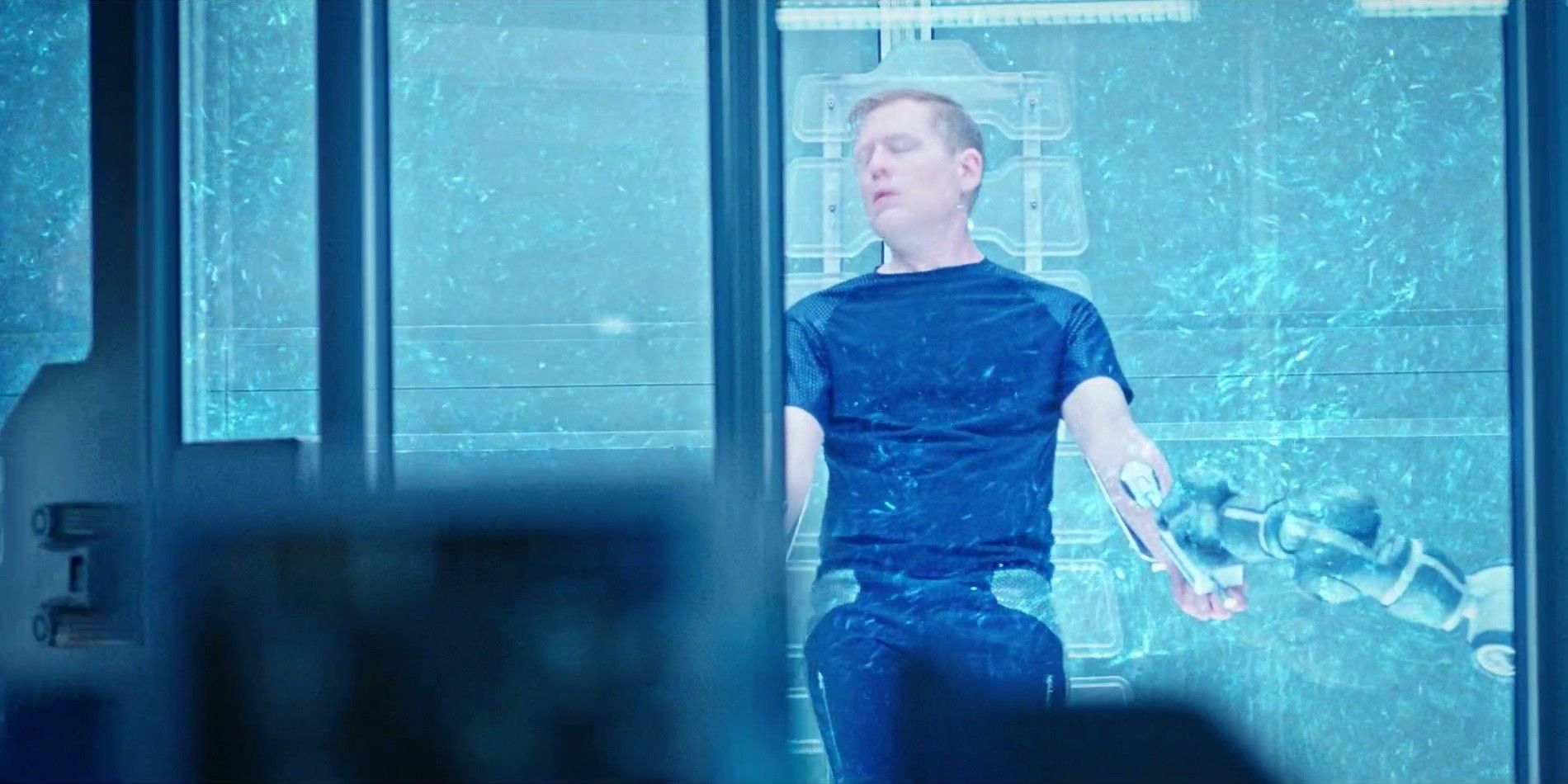Here are the biggest canon inconsistencies in Star Trek: Discovery and the possible ways they could be explained in the narrative. Since debuting in September 2017, Star Trek: Discovery has experienced a very mixed reception from both fans and critics. On one hand, the series has received some very positive reviews and boasts a stellar cast that have delivered a truly modernized iteration of the Star Trek formula. On the other, a vocal section of the fandom haven't warmed to Bryan Fuller and Alex Kurtzman's series, a feeling perhaps magnified by the fact that U.S. viewers can only watch Star Trek: Discovery on CBS' own in-house streaming service.
One of the overriding criticisms of Star Trek: Discovery's first season was the show's apparent deviation from accepted Star Trek canon. Fans of the franchise are renowned for paying close attention to details and aren't afraid to point out when a new release contradicts established Trek lore. With the arrival of Discovery, these fans have had their work cut out. Set only a decade prior to the original series starring William Shatner and Leonard Nimoy, Discovery has somewhat written itself into a corner in terms of how heavily it can impact the fictional history of the Star Trek universe without consequences rippling through the rest of the franchise.
Related: Star Trek: Michelle Yeoh Spinoff Officially In The Works At CBS All Access
Star Trek: Discovery's showrunners are not ignorant to this criticism. Producers have not only acknowledged the fact that the series doesn't quite line up with Star Trek canon, but have also promised fans that what appear to be inconsistencies will in fact be addressed in future episodes. With the second season of Star Trek: Discovery soon to air, here are the biggest continuity issues facing the show and some plausible explanations that could solve them.
- This Page: Klingon Inconsistencies In Star Trek: Discovery
- Page 2: Changes Star Trek: Discovery Has Made To Spock
- Page 3: Is Star Trek: Discovery's Spore Drive A Plot Hole?
Star Trek: Discovery's New Klingon Design Contradicts Previous Series
The first sign that Star Trek: Discovery might be taking a few liberties with canon came when images were released during development that showed radically redesigned Klingons. Devoid of their trademark wild hair and sporting more pronounced ridges, these new Klingons were virtually unrecognizable from those seen in any previous big or small screen entry into the Star Trek franchise and there was an immediate backlash, despite the show's reasoning that different Klingon houses may have altered appearances.
While Star Trek: Discovery's Klingons were one of the first targets for criticism, they also provided the first sign that there may be more to the show's inconsistencies than simple oversight or a lack of respect for the official timeline. Glenn Hetrick, Discovery's head of makeup effects and one of the figures responsible for the Klingon redesign, suggested that the reason for Klingons' baldness comes from the tale of Kahless the Unforgettable, in which the titular warrior dips a lock of hair into a lava pit to create a Bat'leth and, ever since, the Klingons have only grown out their locks in times of peace.
Whether or not this explanation fits into canon is certainly up for debate and there are numerous examples of Klingons waging hairy war elsewhere in the franchise, but Hetrick has also promised that there are other reasons for the Klingons' new look that will be explored later in the narrative, stating "I think people are going to freak out when this unfurls in front of them."
Related: Why Star Trek 4 Has Been Canceled
Interestingly, Star Trek: Discovery season 2 has released images of Mary Chieffo's L'Rell with a brand new mane of hair. Whether fans buy into the "bald in war, hairy in peace" explanation or not, it certainly seems like criticism of the initial design is being addressed in season 2, bringing Discovery's Klingons closer to what viewers know and love.
The Federation-Klingon War Doesn't Fit The Timeline
It isn't just the design of the Klingons that clashes with canon in Star Trek: Discovery, it's also their role in the series. Much of Discovery's debut voyage centers around a tough and bloody war between the Federation and the Klingons that almost results in a full-on invasion of Earth. For such a monumental event, it's strange that there's no mention of this war elsewhere in the franchise, particularly The Original Series, which takes place only ten years later.
However, some fans have pointed out elements of the older Star Trek adventures that do hint towards a recently concluded major conflict. These include (via Inverse) Kirk's immediate wariness and distrust of the Klingons during their first encounter, Starfleet's relatively small selection of ships in the TOS era, and the existence of a Klingon Neutral Zone that is located in the same region of space as Discovery's Battle of the Binary Stars. Not everyone will be convinced that these details can justify Discovery adding a huge war to Star Trek canon so close to The Original Series, but it certainly adds some consistency between shows.
Related: Star Wars Is Copying Star Trek Now
A further issue with the Federation-Klingon war is the Klingons' use of cloaking technology. In TOS, it's heavily implied that the Romulans are the first race to cloak their ships, or at least the first encountered by Starfleet. While this conundrum certainly poses a challenge to established canon, Discovery wasn't the first culprit, as cloaking actually appeared in Star Trek: Enterprise, a show set in Starfleet's distant past. While there's no obvious explanation as to why Kirk and Spock and so confused by cloaking, Star Trek: Discovery is arguably only setting a precedent set previously by Enterprise.
Page 2 of 3: Changes Star Trek: Discovery Has Made To Spock
Spock Never Mentioned His Sister Before
Out of all the colorful characters in Star Trek, no one is more synonymous with the franchise than the Enterprise's first officer, Spock. From the very first pilot episode to J.J. Abrams' movie reboot, Spock has never been far from the Star Trek story but, in all that time, not once has the Vulcan ever mentioned having an adopted human sister.
And yet that's exactly who Sonequa Martin-Green's Michael Burnham was revealed to be and, unlike her brother, she's not shy about her family connections. Immediately after this was revealed ahead of Star Trek: Discovery's debut, fans began to question how they could accept such a deep connection between this new protagonist and Leonard Nimoy's Spock when the latter had never acknowledged Burnham's existence. In all of Spock's arguments with Kirk and Bones about human behavior and emotion, did he really not think to bring up the fact he had a human sibling?
This concept may not be as far-fetched as it appears. In Star Trek V: The Final Frontier, it is revealed that Spock has a half-brother called Sybok who, once again, had never previously been mentioned, although, in fairness, Sybok was exiled from Vulcan and Spock's reluctance to reference him could've emanated from shame. It's also worth noting that in "Journey To Babel," Spock fails to mention that the Vulcan ambassador who just beamed aboard the Enterprise is actually his own father, Sarek. Only when Kirk suggests Spock beam down to his home planet to visit his family is this revealed.
Related: These Awesome Star Trek: Discovery Theories Turned Out to Be TRUE!
Clearly, there is a typically Vulcan disconnect between Spock and his family and it is plausible that, throughout the franchise, Spock would never mention Burnham in conversation because it was never logically necessary. However, producer and creator Alex Kurtzman has promised that this piece of continuity will be addressed in season 2, so there's likely to be a more involved explanation.
Federation Mutiny and Sarek
Never being mentioned by her famous brother isn't the only inconsistency surrounding Michael Burnham. Right at the outset of Star Trek: Discovery's story, Burnham commits mutiny on the U.S.S. Shenzhou, attempting to overrule the orders of Captain Georgiou after giving her a Vulcan nerve pinch. Following this incident, Burnham becomes infamous for being Starfleet's first mutineer. This event essentially triggers the entire Discovery story but ignores the fact that in the original 1960s series, it was stated that there had never been a record of mutiny on a Federation ship. Even though Burnham is pardoned by the end of Star Trek: Discovery's first season, it would surely be inconceivable that every officer would forget her crime within the space of ten years.
The other significant inconsistency surrounding Burnham concerns the characterization of Sarek. James Frain's version of Spock's Dad is undoubtedly more compassionate, kind and arguably more human than other incarnations, particularly when it comes to his relationship with Burnham. Of all Discovery's inconsistencies, this is perhaps one of the least notable, but it still contributes to the array of issues surrounding Burnham's inclusion into the Star Trek franchise.
Issues that would all be solved if Star Trek: Discovery concluded with Burnham being erased from history. With all the mirror universe, time-bending science going on in Discovery, it's not inconceivable to think that a person could somehow write themselves out of existence. Discovery's producers have promised that the show will sync up to canon at some point and one of quickest ways to do this would be deleting Burnham from time, most likely as the tragic consequence of saving the universe. This would explain why Spock never mentions her, why there's no record of a mutiny and why Sarek seems less compassionate in TOS than in Discovery. Such a move could also be used to explain away the Federation-Klingon war, as Burnham wouldn't have been on board the Shenzhou to trigger the conflict.
Page 3 of 3: Is Star Trek: Discovery's Spore Drive A Plot Hole?
Is Star Trek: Discovery's Spore Drive A Plot Hole?
Produced half a century after Star Trek began, Discovery was always going to look more technologically advanced than previous series and many fans accept that this aesthetic update isn't a plot hole in its own right. However, several pieces of tech have turned up in Discovery that some argue is beyond what should be available at that point in the timeline. This accusation has been regularly aimed at Star Trek: Discovery's use of hologram technology, such as battle simulations and holo-communications, as these elements were not present in TOS. They were, however, somewhat present in both Enterprise and The Animated Series, although it is questionable whether the latter should be considered canon.
Undoubtedly the most significant example of Discovery's overly-advanced tech, however, is the Spore Drive engine. The Spore Drive essentially allows the ship to teleport to a specific location via the Mycelium Network and this has opened up plenty of storylines and points of discussion for Star Trek: Discovery to explore. The Spore Drive certainly would've been useful during Picard's battle with the Borg or when the Voyager spent several seasons trying to find its way home but, unfortunately, this technology was nowhere to be found and isn't mentioned elsewhere in Star Trek lore.
Read More: Star Trek: Where Jean-Luc Picard's Story Left Off
Discovery has already explored the negative impact of the Spore Drive on its navigator, namely Paul Stamets, and there is perhaps an implication that the engine would eventually be deemed unsafe and banned by Starfleet. Combine this with the fact that the Spore Drive was developed in secret, and a possible explanation for its absence in later series begins to emerge. Given the power of this technology, however, there are certainly many points in Star Trek history where use of the Spore Drive, even with its inherent risks, could've saved many lives and its introduction in Discovery remains out of sync with the rest of the Star Trek story heading into season 2.
-
While these explanations offer in-universe explanations for Discovery's changes, the real-life reasons are far more obvious. The challenge of creating any new television series is tough, but being restricted by over 50 years of fictional history makes the task virtually impossible. This is ultimately why the J.J. Abrams movie series takes place in a completely different timeline. Whatever your opinion on Star Trek: Discovery, there's no doubt that it's easier to enjoy the series when you ignore the rest of Trek's timeline and focus solely on the events taking place on screen.
However, it could also be said that adhering to canon is a key part of building a lasting, successful franchise and that Star Trek wouldn't be the cultural behemoth it is today without its rich and detailed fictional world that fans invest so heavily into. It's a fine balance and one that Star Trek: Discovery clearly hasn't got quite right just yet. Still, the show's producers insist that Discovery will make canonical sense eventually, although this might be very difficult to achieve without a big, show-changing reveal along the lines of Discovery actually being set in a third mirror universe. Viewers will soon see whether Star Trek: Discovery season 2 brings the series closer to canon, or pushes it further away.
Next: Star Trek Movies & TV: What The Franchise's Future Looks Like
Star Trek: Discovery season 2 premieres January 17th on CBS All Access in the U.S. and 24 hours later on Netflix internationally.

